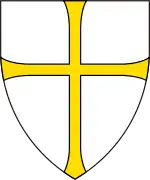Gravvik Municipality
Gravvik herred | |
|---|---|
| Gravik herred (historic name) | |
 Nord-Trøndelag within Norway | |
 Gravvik within Nord-Trøndelag | |
| Coordinates: 64°59′24″N 11°46′07″E / 64.99000°N 11.76861°E | |
| Country | Norway |
| County | Nord-Trøndelag |
| District | Namdalen |
| Established | 1 Jan 1909 |
| • Preceded by | Leka Municipality |
| Disestablished | 1 Jan 1964 |
| • Succeeded by | Nærøy Municipality |
| Administrative centre | Gravvik |
| Area (upon dissolution) | |
| • Total | 192 km2 (74 sq mi) |
| Population (1964) | |
| • Total | 816 |
| • Density | 4.3/km2 (11/sq mi) |
| Time zone | UTC+01:00 (CET) |
| • Summer (DST) | UTC+02:00 (CEST) |
| ISO 3166 code | NO-1754[1] |
Gravvik is a former municipality in the old Nord-Trøndelag county, Norway. The 192-square-kilometre (74 sq mi) municipality existed from 1909 until its dissolution in 1964. The municipality covered the northern coastal areas of the present-day municipality of Nærøysund in Trøndelag county. The administrative centre of the municipality was the village of Gravvik where the Gravvik Church is located.[2]
History
The municipality of Gravik (later spelled Gravvik) was established on 1 January 1909 when the municipality of Leka was divided in two. The northern island area (population: 1,209) became the new (smaller) municipality of Leka and the southern coastal area (population: 881) became the municipality of Gravvik.
During the 1960s, there were many municipal mergers across Norway due to the work of the Schei Committee. On 1 January 1964, the neighboring municipalities of Kolvereid (population: 2,426), Nærøy (population: 2,182), Gravvik (population: 816), and the western two-thirds of Foldereid were merged to form the new, larger municipality of Nærøy.[3]
Name
The municipality (originally the parish) is named after the old Gravik farm which was named after the local Gravikvågen bay. The first element comes from the Old Norse word grǫf which means "grave". The last element is vik which means "cove" or "inlet".[4] The name of the municipality was spelled Gravik from its establishment in 1909 until 15 August 1913 when a royal resolution changed the spelling of the name of the municipality to Gravvik.[5]
Government
During its existence, this municipality was governed by a municipal council of elected representatives, which in turn elected a mayor.[6]
Mayors
- 1908–1913: Karl August Jensen (H)
- 1914–1919: Martin Mortensen Skotvik
- 1920–1922: Jakob Dølør (V)
- 1923–1925: Ole Wang Skotnes
- 1926–1928: Ole Dragland (Bp)
- 1929–1942: Mathias K. Hagen (Bp)
- 1942–1945: Arne Olsen
- 1945-1945: Jens Wang
- 1946–1947: Ingvard Hiller
- 1948–1950: Bjarne Størdal
- 1950–1951: Fredrik Gansmo
- 1952–1959: Harald Tømmervik (Bp)
- 1960–1963: Edvin Aspli (Sp)
Municipal council
The municipal council (Herredsstyre) of Gravvik was made up of 13 representatives that were elected to four year terms. The party breakdown of the final municipal council was as follows:
| Party name (in Norwegian) | Number of representatives | |
|---|---|---|
| Local List(s) (Lokale lister) | 13 | |
| Total number of members: | 13 | |
| Party name (in Norwegian) | Number of representatives | |
|---|---|---|
| Local List(s) (Lokale lister) | 13 | |
| Total number of members: | 13 | |
| Party name (in Norwegian) | Number of representatives | |
|---|---|---|
| Labour Party (Arbeiderpartiet) | 3 | |
| Local List(s) (Lokale lister) | 9 | |
| Total number of members: | 12 | |
| Party name (in Norwegian) | Number of representatives | |
|---|---|---|
| Local List(s) (Lokale lister) | 12 | |
| Total number of members: | 12 | |
| Party name (in Norwegian) | Number of representatives | |
|---|---|---|
| Local List(s) (Lokale lister) | 12 | |
| Total number of members: | 12 | |
| Party name (in Norwegian) | Number of representatives | |
|---|---|---|
| Labour Party (Arbeiderpartiet) | 1 | |
| List of workers, fishermen, and small farmholders (Arbeidere, fiskere, småbrukere liste) | 1 | |
| Joint List(s) of Non-Socialist Parties (Borgerlige Felleslister) | 4 | |
| Local List(s) (Lokale lister) | 6 | |
| Total number of members: | 12 | |
| Note: Due to the German occupation of Norway during World War II, no elections were held for new municipal councils until after the war ended in 1945. | ||
See also
References
- ↑ Bolstad, Erik; Thorsnæs, Geir, eds. (26 January 2023). "Kommunenummer". Store norske leksikon (in Norwegian). Kunnskapsforlaget.
- ↑ Thorsnæs, Geir, ed. (8 December 2017). "Gravvik". Store norske leksikon (in Norwegian). Kunnskapsforlaget. Retrieved 29 April 2018.
- ↑ Jukvam, Dag (1999). "Historisk oversikt over endringer i kommune- og fylkesinndelingen" (PDF) (in Norwegian). Statistisk sentralbyrå.
- ↑ Rygh, Oluf (1903). Norske gaardnavne: Nordre Trondhjems amt (in Norwegian) (15 ed.). Kristiania, Norge: W. C. Fabritius & sønners bogtrikkeri. p. 374.
- ↑ "Norsk Lovtidende. 2den Afdeling. 1913. Samling af Love, Resolutioner m.m". Norsk Lovtidend (in Norwegian). Oslo, Norway: Grøndahl og Søns Boktrykkeri: 332. 1913.
- ↑ Hansen, Tore; Vabo, Signy Irene, eds. (20 September 2022). "kommunestyre". Store norske leksikon (in Norwegian). Kunnskapsforlaget. Retrieved 1 January 2023.
- ↑ Hansen, Runbjørg Bremset (2000). Nærøyfolket. Bind 1: 1800-1920 (in Norwegian). Kolvereid: Nærøy kommune. p. 348. ISBN 8299575419.
- ↑ Hansen, Runbjørg Bremset (2004). Nærøyfolket. Bind 2: 1920-1970 (in Norwegian). Kolvereid: Nærøy kommune. p. 282. ISBN 8299575427.
- ↑ "Kommunevalgene og Ordførervalgene 1959" (PDF) (in Norwegian). Oslo: Statistisk sentralbyrå. 1960. Retrieved 14 April 2020.
- ↑ "Kommunevalgene og Ordførervalgene 1955" (PDF) (in Norwegian). Oslo: Statistisk sentralbyrå. 1957. Retrieved 14 April 2020.
- ↑ "Kommunevalgene og Ordførervalgene 1951" (PDF) (in Norwegian). Oslo: Statistisk sentralbyrå. 1952. Retrieved 14 April 2020.
- ↑ "Kommunevalgene og Ordførervalgene 1947" (PDF) (in Norwegian). Oslo: Statistisk sentralbyrå. 1948. Retrieved 14 April 2020.
- ↑ "Kommunevalgene og Ordførervalgene 1945" (PDF) (in Norwegian). Oslo: Statistisk sentralbyrå. 1947. Retrieved 14 April 2020.
- ↑ "Kommunevalgene og Ordførervalgene 1937" (PDF) (in Norwegian). Oslo: Statistisk sentralbyrå. 1938. Retrieved 14 April 2020.

